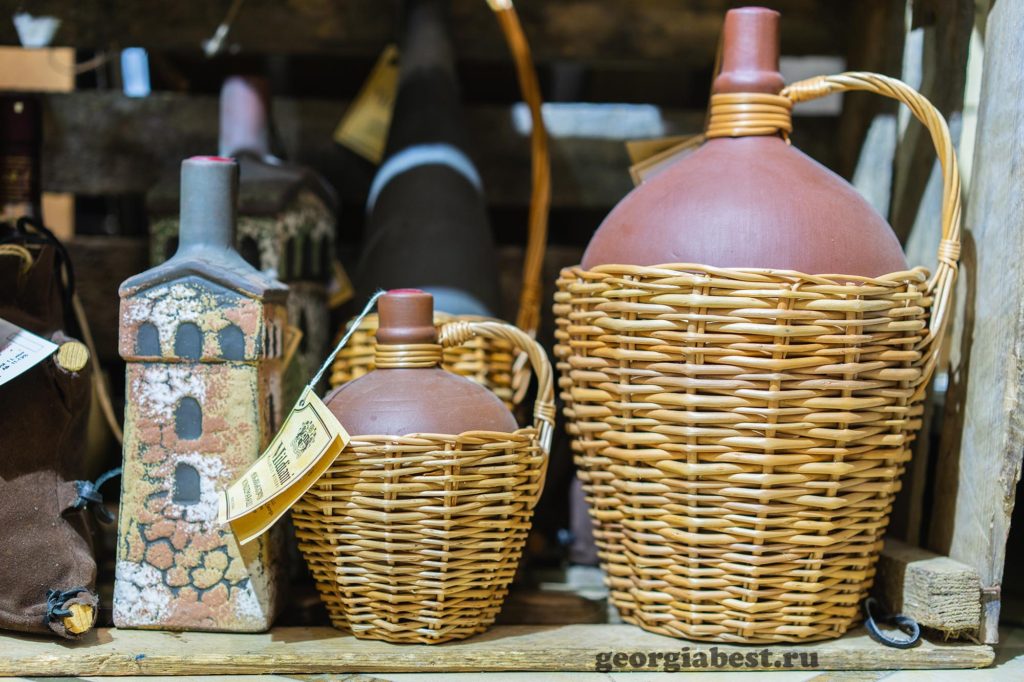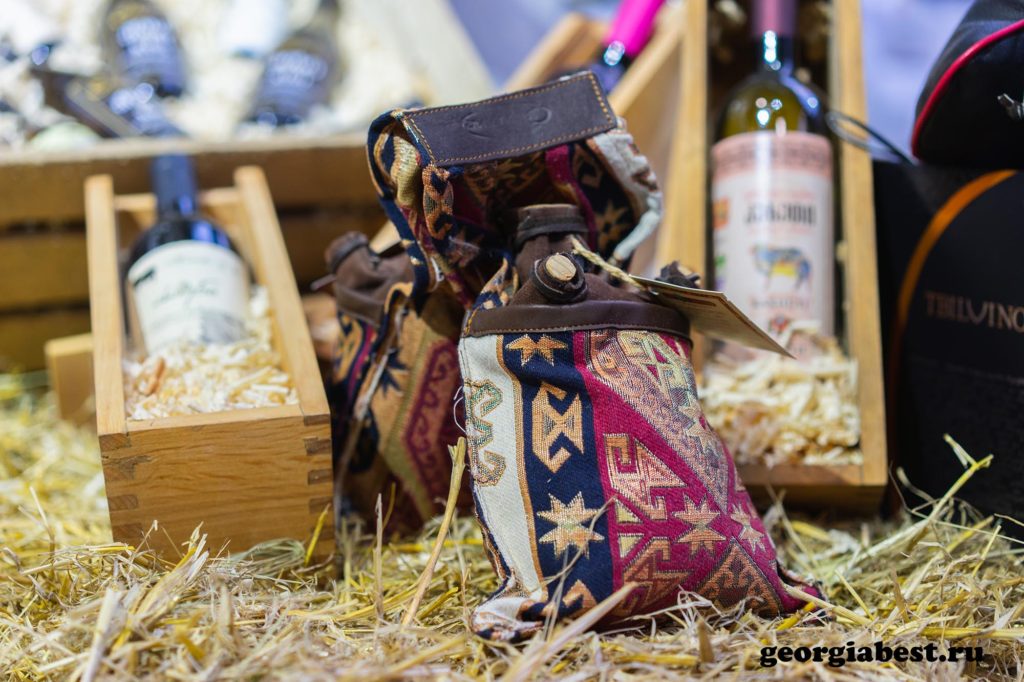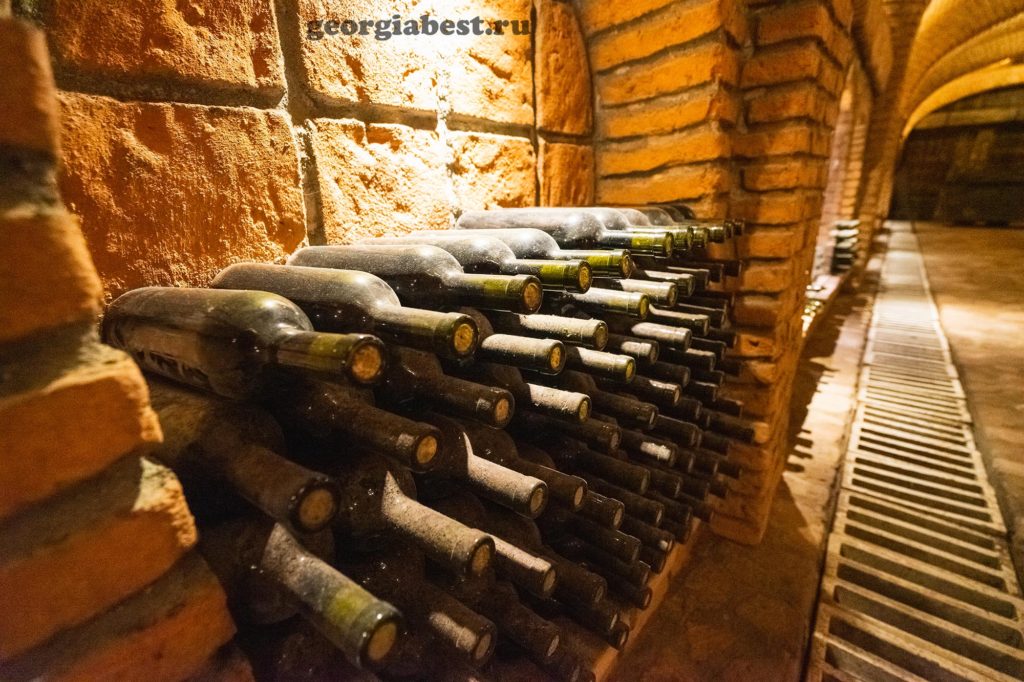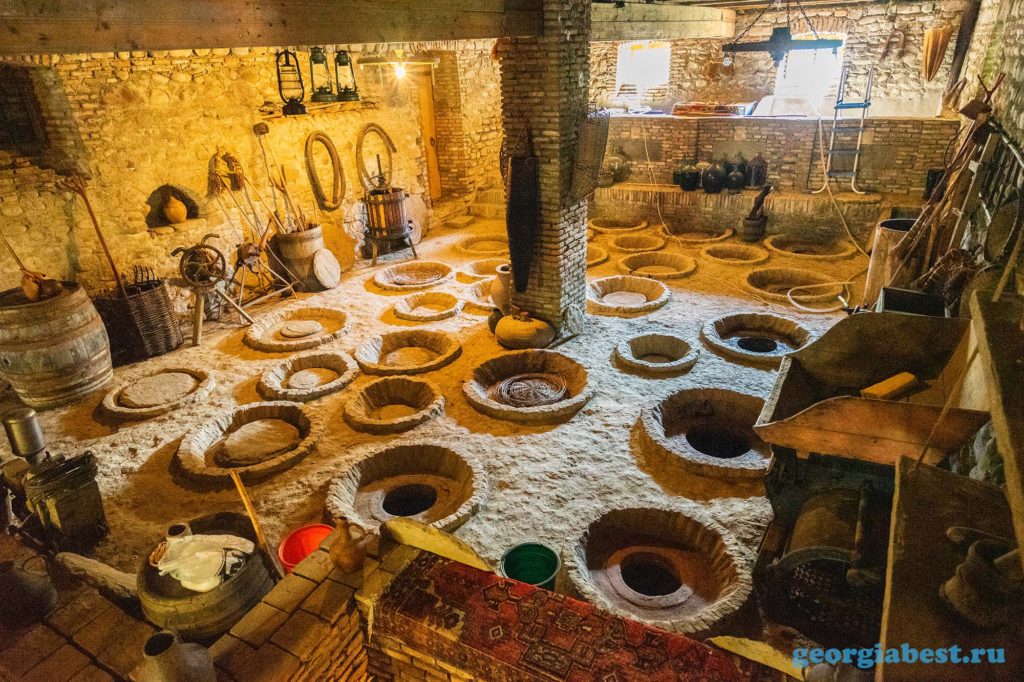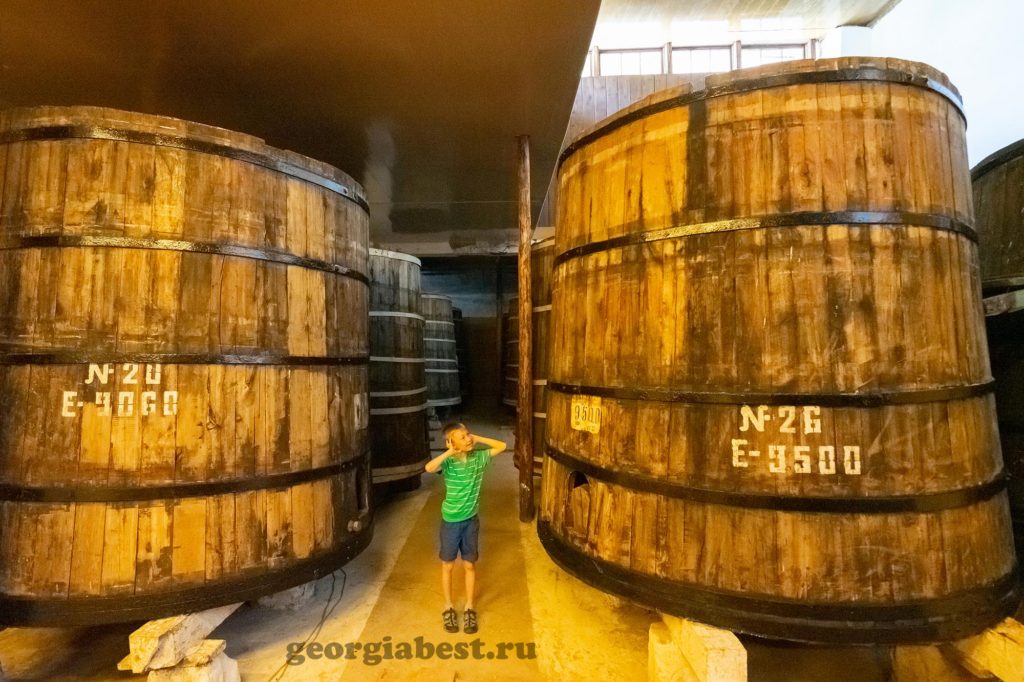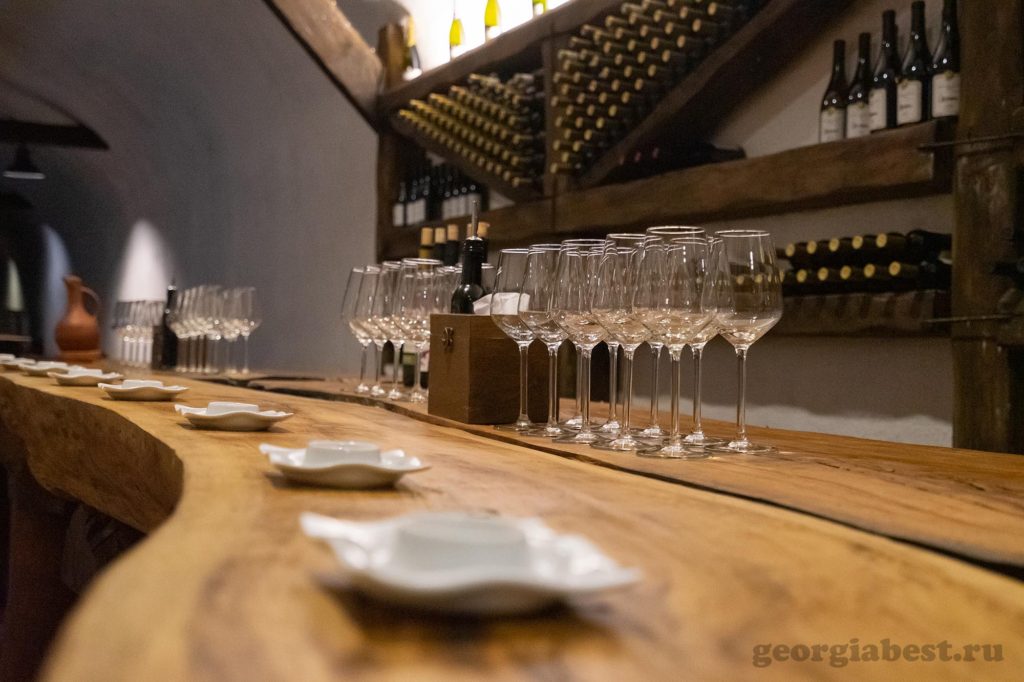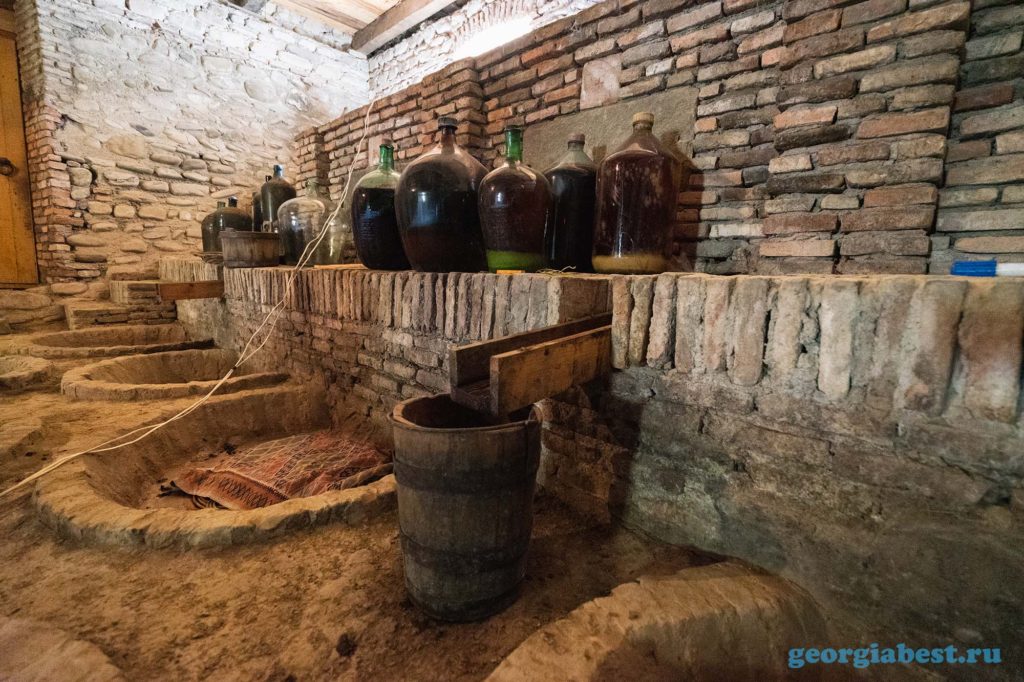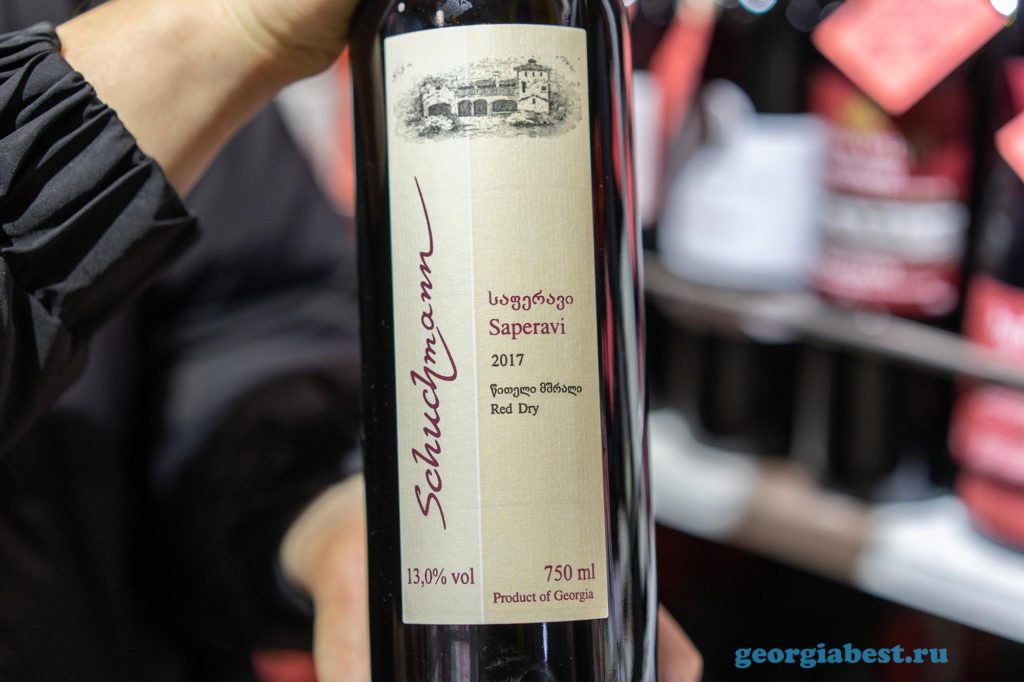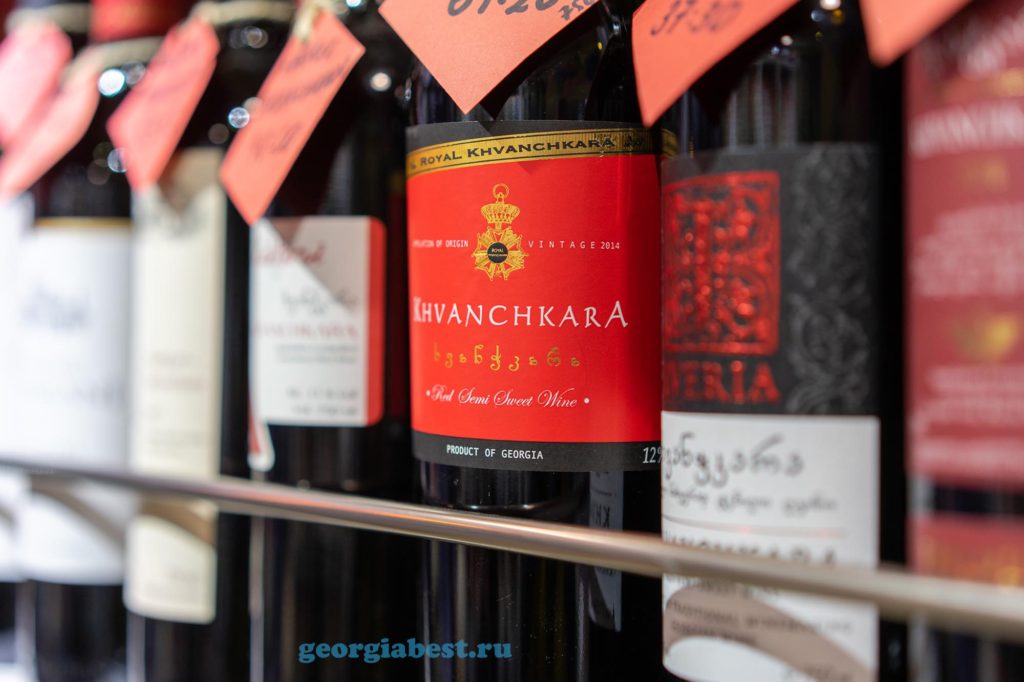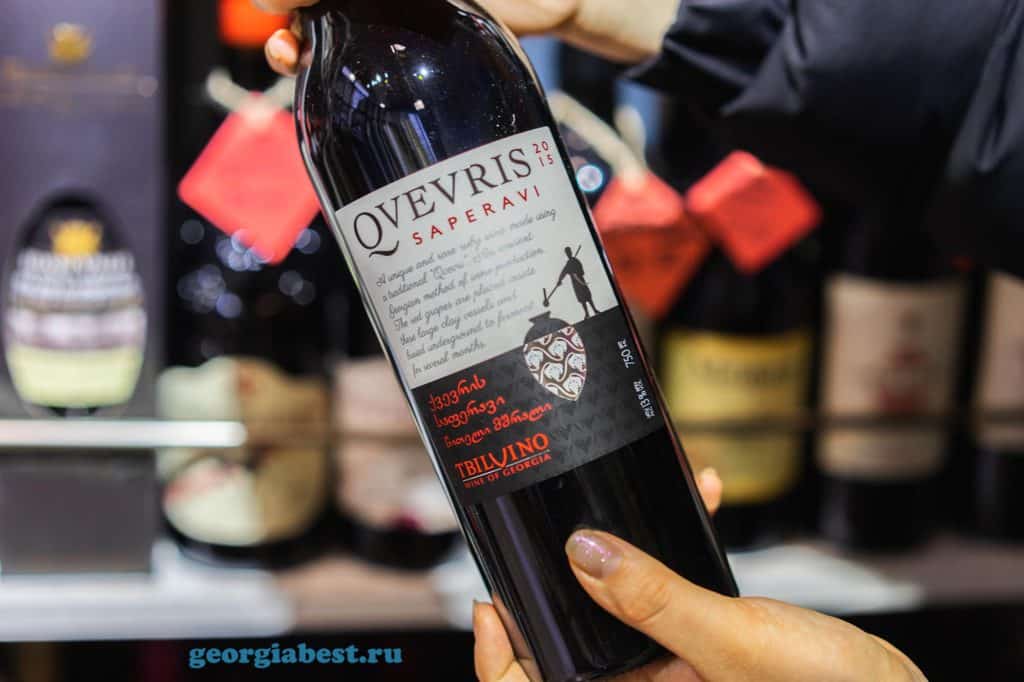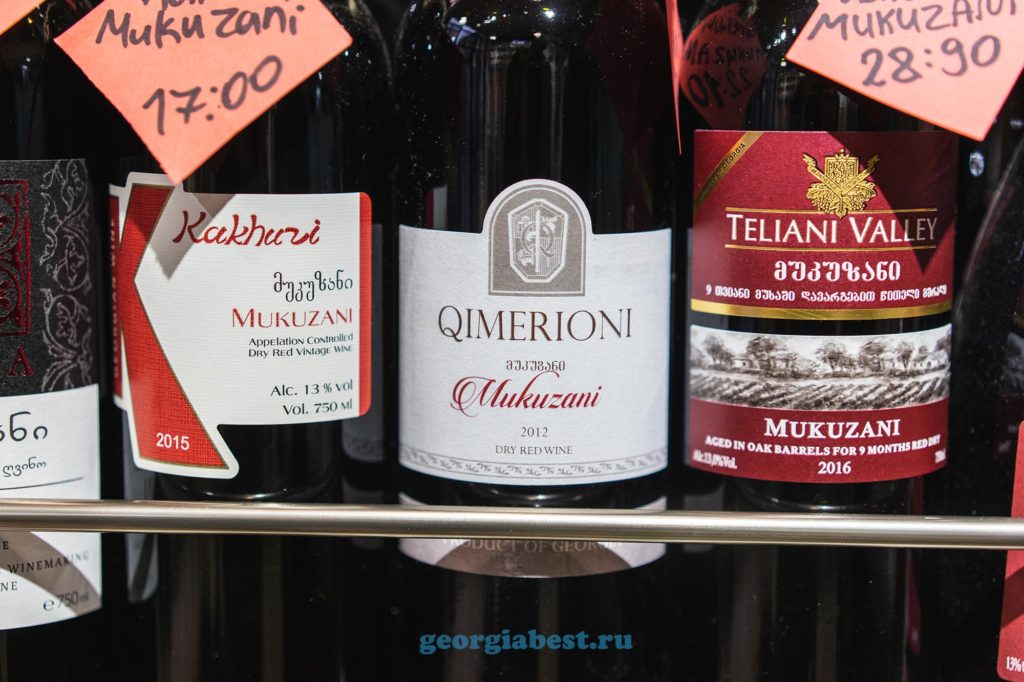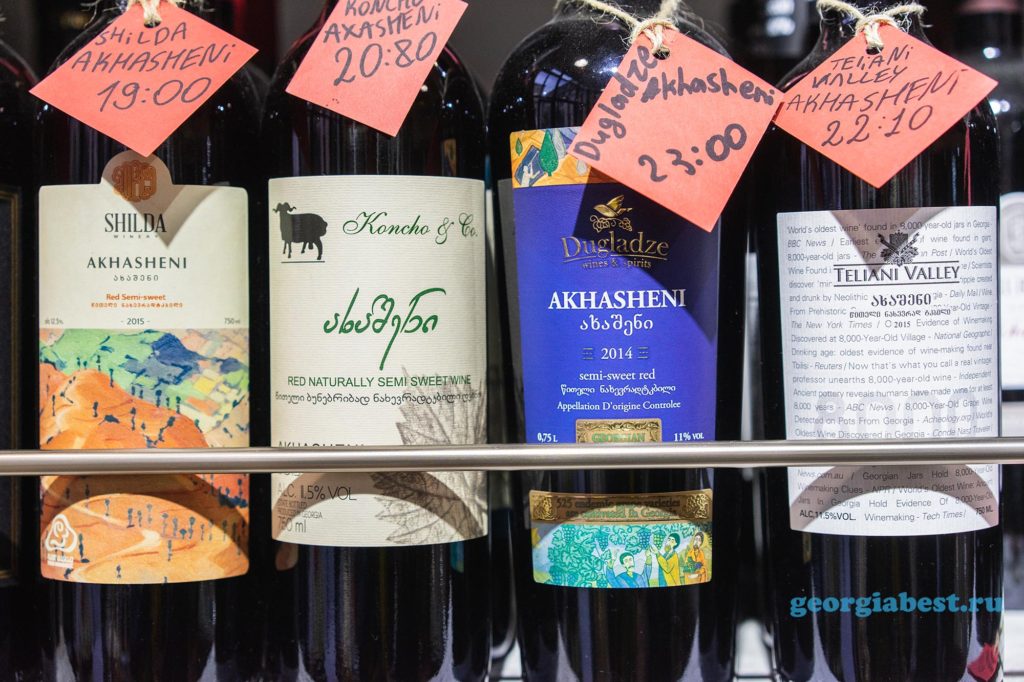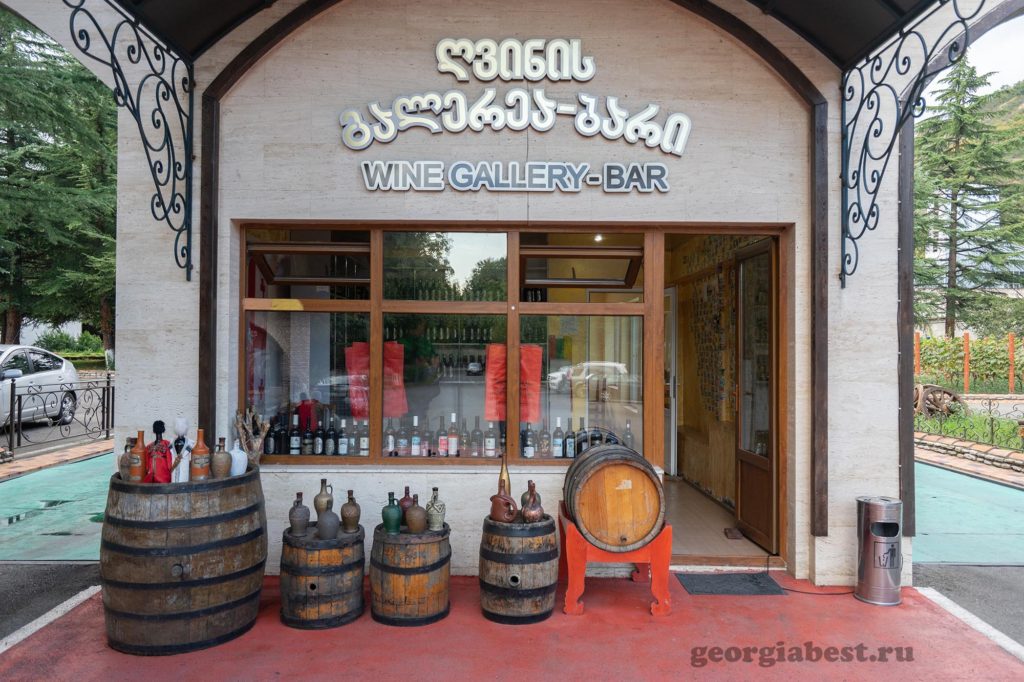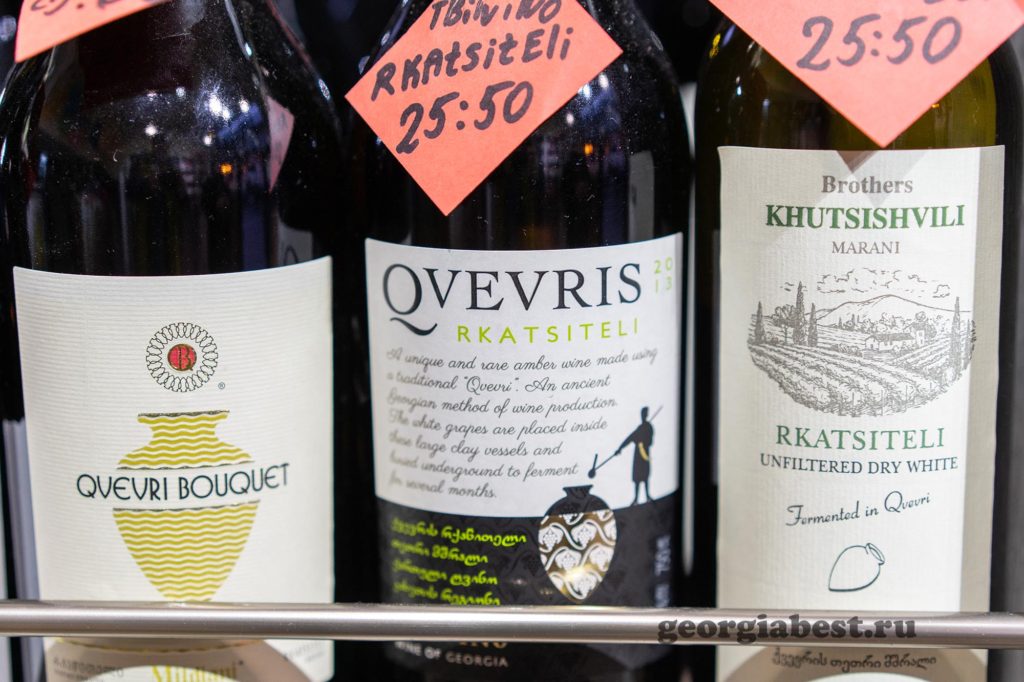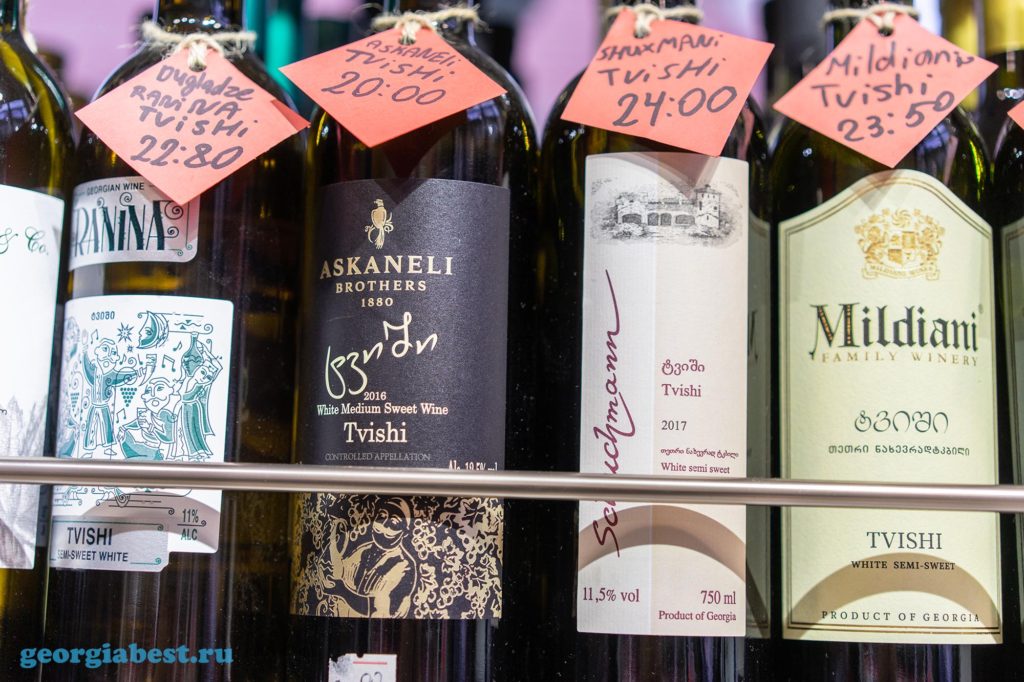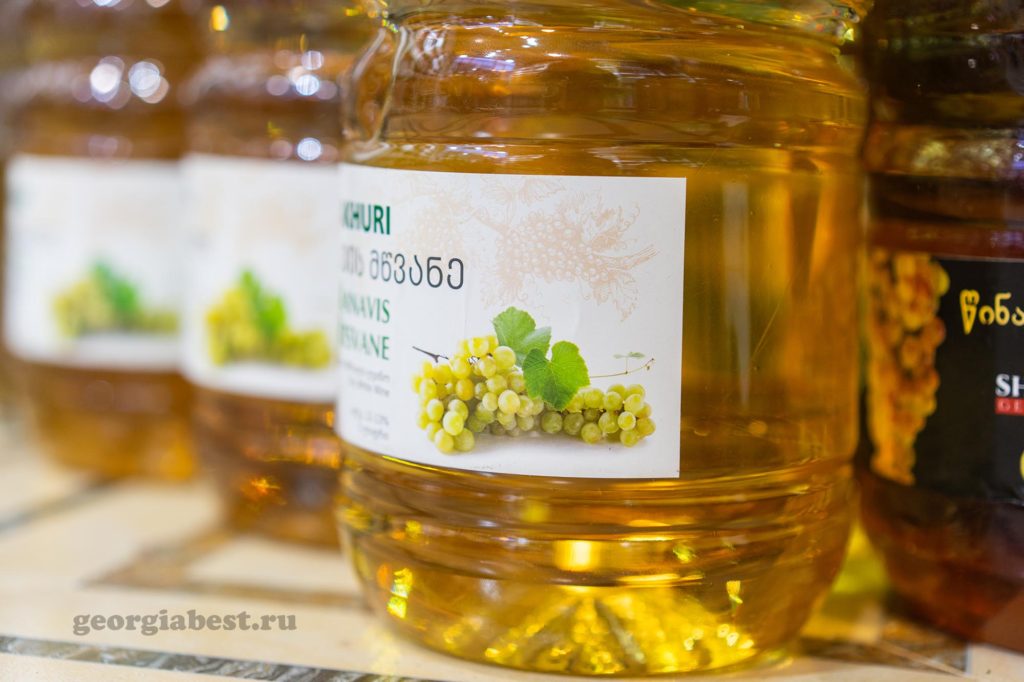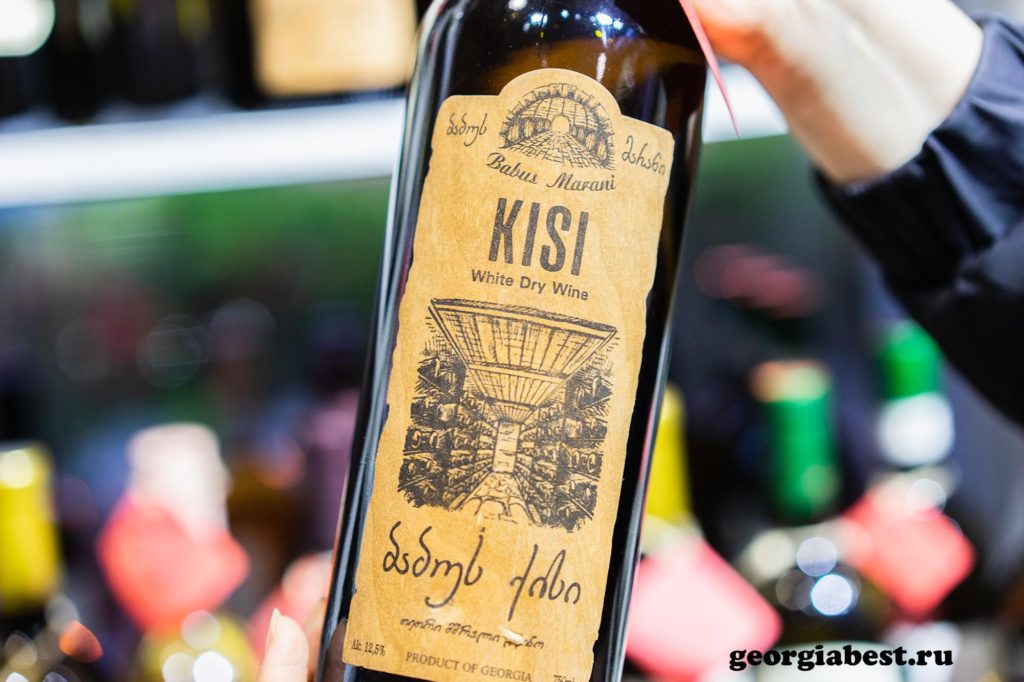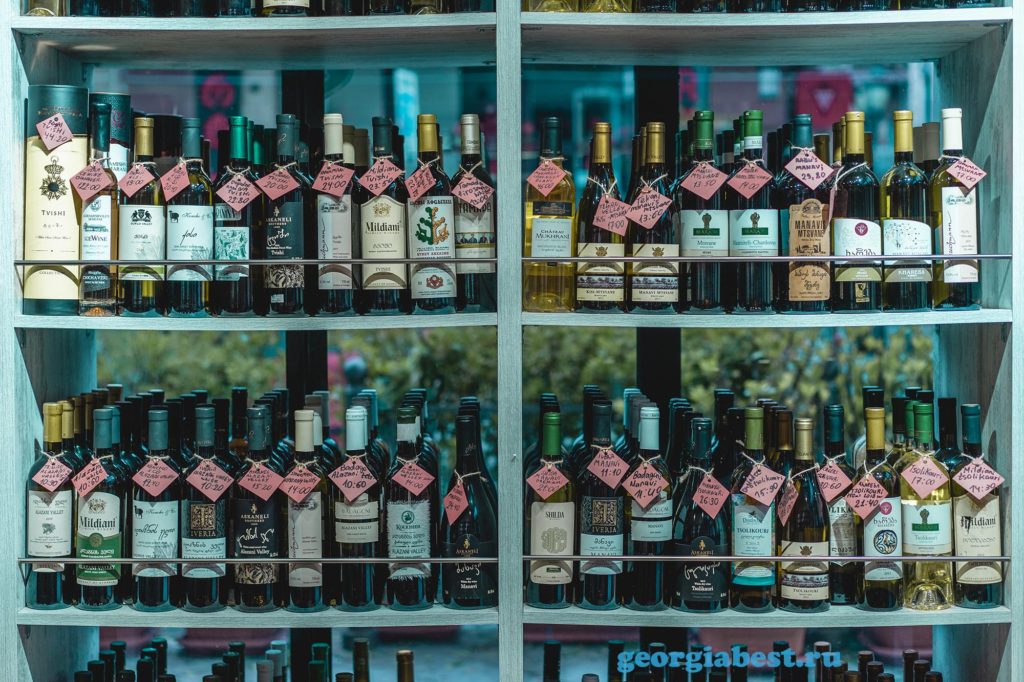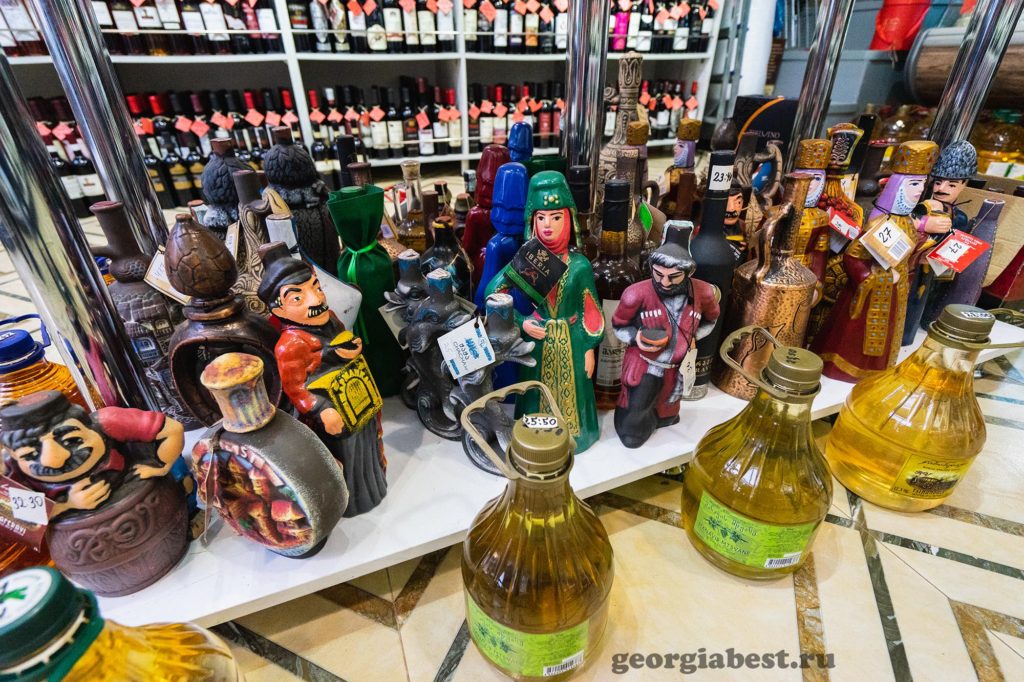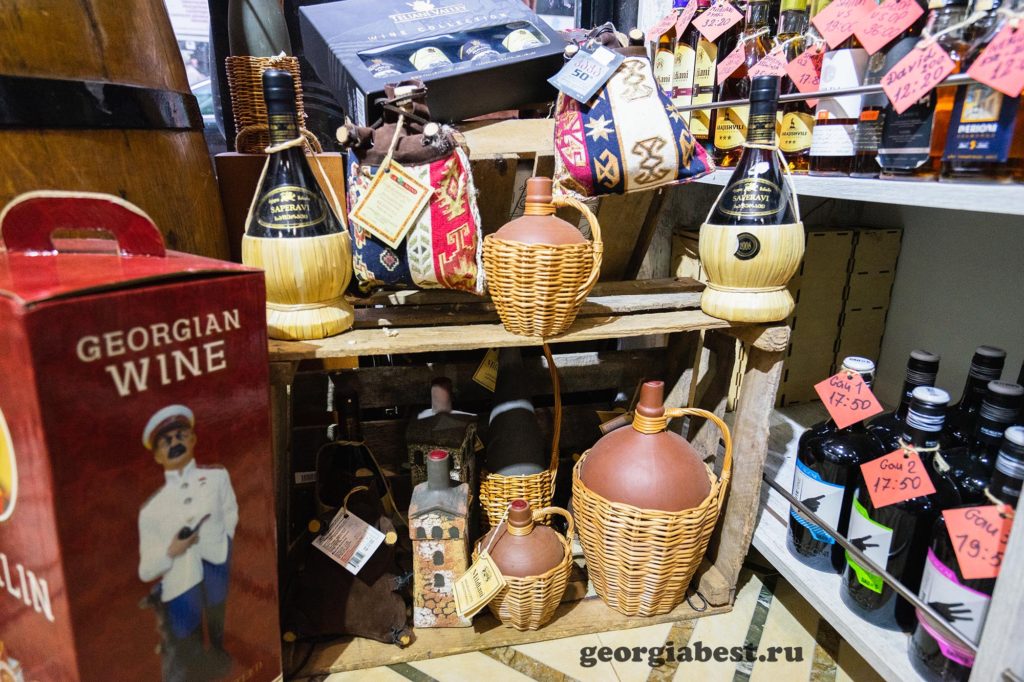Most of us are used to treating wine as one of the types of alcoholic beverages. It is also generally accepted that winemaking is one of the branches of agriculture. Perhaps this is true for the rest of the world, but Georgians have a different attitude to this craft. Winemaking in Georgian culture is the foundation or the core on which everything else rests. It is impossible to imagine Georgia without wine, and wine without Georgians.
This article will tell you which of the best Georgian wines are popular among locals and tourists, which producers are worthy of your attention, where to get homemade Georgian wine, and will also provide a lot of useful information and interesting details about winemaking in the wonderful country of Sakartvelo.
Georgian Wine – History and Facts You Didn’t Know
As evidenced by the research of scientists and archaeologists, Georgians have been engaged in winemaking for several thousand years, without changing its ancient traditions. It was in Georgia that the most ancient wine vessel was found – qvevri (clay wine jug), dating back to 6000 years BC.
More than 500 varieties of grapes grow in Georgia, that is, one sixth of all varieties existing in the world (this is 4000 varieties) have Georgian roots. What is surprising is that these grapes were not imported, but have always grown here.
Georgian wine is listed in the Guinness Book of Records as the oldest in the world. During excavations in the Shulaveri area, chemical traces of wine dating back 6,000-5,800 years BC were discovered, as well as large clay jugs in which the wine was most likely stored and “aged”.
For Georgians, wine is a sacred drink with a soul and character. Grapes are identified with a person, and therefore, according to the Georgian feast tradition, one cannot drink wine without a toast (a blessing, a wish, a sermon – the same sacred act).
Even in pagan times, according to historians, wine was used exclusively for sacred purposes. In Georgia, even today, no winemaker allows himself to go to the grapes in a bad mood, swear, insult or curse someone on the days when he works in his vineyard. He is deeply convinced that the grapes, like a person, are sensitive to his mood, and will certainly reciprocate his attitude. Georgians believe that the taste of the wine can determine the character of the winemaker!
It is worth adding that the wine in Western Georgia is lighter than in the East due to the fact that the juice with the pulp is kept for fewer days. Therefore, it is drunk in large quantities, for example, drinking from large horns is a Western Georgian tradition.
The uniqueness of wine production in qvevri
It is precisely their unique technology that makes Georgian wines interesting, as well as their eco-friendliness and unique taste and aroma. Of course, many different worthy wines are now produced here using modern, European technology, but guests of our warm and proud little country are first and foremost always curious to see with their own eyes the huge kvevri jugs immersed in the cellar floor, to touch the centuries-old mystery of turning grape juice into an exquisite drink.
Few people know that the process of winemaking among Georgians is identified with family and marriage. The clay jug qvevri is called “papa”, and the pulp (squeezed grape skins and seeds) is “mama”. The pulp is placed in the jug together with the grape juice, and together the “jug-papa” and “pulp-mama” give birth to a child, that is, wine. Only Georgians work this way, and they call European wine obtained without the use of pulp “orphan”.
Kvevri is a clay vessel with a capacity of 50 liters to 6 tons, and wine is made and stored in it. The vessels are completely immersed in the ground, and only the neck remains on the surface. This allows maintaining a stable temperature of 10-15 degrees Celsius, at which the wine can be stored for a long time without spoiling.The vessel has an egg-shaped form, with a pointed bottom, which is necessary for better filtration (the sediment collects in one place and does not mix with the wine). From the inside, the kvevri is covered with beeswax. Such environmentally friendly vessels allow the wine to remain as pure as possible, without foreign impurities, smells or tastes.
The uniqueness of the Georgian technology of wine production in qvevri is that both production phases (fermentation and aging) occur in contact with the pulp, unlike the European technology, in which the pulp is separated and the wine goes through both phases without contact with the pulp. This method has no analogues in the world, and for this reason, as well as due to its exceptional antiquity, the Georgian technology and the qvevri vessel were included in the UNESCO Intangible Heritage List.
BBC about Georgian wine
According to the latest BBC article on Georgian winemaking from February 2019, qvevri wine now accounts for 10% of the country’s production, with the rest being made using modern methods. But even this wine, made using European technology, has a very different taste from wines from other countries, as Georgia grows a large number of unique grape varieties that are not found anywhere else. Therefore, the taste of Georgian wines seems unfamiliar, unusual, too intense to many foreigners, as Lisa Granik, an American expert on Georgian wines, explains.
The BBC emphasizes that a distinctive feature of Georgian wines is also the absence of sulfur dioxide in the composition of the vast majority of wine produced. As a result, it cannot be stored and transported for as long as wine from other producing countries. Despite these points, the BBC predicts its growing popularity throughout the world, as more and more people are looking for something old, wild and original, and the best wines of Georgia meet all these requirements.
Qvevri and Georgian orange wine
Did you know that white Georgian wine is not really white? It is actually amber! If we are talking about white wine made using Georgian technology, it means contact of grape juice with pomace (pulp), as a result of which the wine acquires an amber, or red, or orange color! This happens due to a substance called “lignin”, contained in grape seeds. It colors the wine in such an amber shade. The color of white Georgian wine resembles the color of beer, or lemonade “Duchess”. White wines obtained using European technology, without adding pulp, have a straw shade.
As a result of the action of tannins contained in the cake, the drink acquires an unusual dark, brownish, yellowish, amber or orange color. Orange, or amber wine has a special taste. Due to the cake content during fermentation and aging, the amount of tannins in the wine is increased. This gives the drink greater astringency and viscosity, a unique, rich aroma.
Orange wine is becoming popular in Europe. Italian winemaker Joschka Gravner, for example, was so inspired by the Georgian art of producing amber wine that he brought a dozen qvevris to Italy and began to create orange wine in the same way as modern Georgians have done for many centuries and continue to do. And this drink finds a response in the hearts of lovers of everything unusual, inimitable and unique in all corners of the world.
If you want to try real homemade Georgian wine, and you simply must want to, feel free to contact the locals, but even better, contact a good guide who will know exactly the coordinates of large wineries and small family businesses where it is best to taste quality homemade wine.
Names of Georgian wines and their description
Red wines of Georgia
The basic principle of the technology of producing natural semi-sweet wine is to stop the fermentation process by instantly cooling the wine to -6 degrees Celsius. With a sharp decrease in temperature, the chemical reaction stops, due to which not all the grape sugar turns into alcohol. The remaining sugar in the drink is 3-4%, and thus wonderful red semi-sweet Georgian wines are created.
Kindzmarauli – comes from the Georgian “kindzmoreuli”, which means “mixed with cilantro”. Red natural semi-sweet wine, made from Saperavi grapes grown in the Kindzmarauli microzone. It was first produced in 1943. The soil in this microzone is especially rich in useful minerals, which are washed out by mountain streams of melt water from heavy rains from the soil of the foothills of the Greater Caucasus. These minerals give the grapes a special sweetness and rich taste. In these places, cilantro grows in the vineyards, and some winemakers specially sow it. Kindzmarauli is one of the most popular and beloved wines in Georgia and especially abroad.
Saperavi – is made from the grape variety of the same name “Saperavi” using both European and Georgian technology. The wine has a dark ruby color with an eggplant hue, very rich in red pigment. “Saperavi” in Georgian means “dye”. Georgians call this wine black. Despite its enormous popularity, this wine is not consumed by locals at feasts. The fact is that the “Saperavi” grape variety has hypertensive properties and increases blood pressure. Drinking wines from it in large quantities (as they like to do here) causes serious consequences the next day.
Khvanchkara is the queen of Georgian red semi-sweet wines. Real Khvanchkara is a very rare and expensive wine. This is a western Georgian wine from the Racha region of the Khvanchkara microzone. It is made from two endemic grape varieties: alexandrouli and mujuretuli. Khvanchkara is a small village, and its vineyards occupy only a small part of the territory of the Rioni River valley. The protection of the surrounding mountains and the special soil, rich in minerals, affect the taste of these two varieties in a special way, and as a result, we get the very same Khvanchkara.
The same varieties growing outside this microzone have different taste properties. Since the territory of the vineyards of the Khvanchkara microzone is small, the volume of the Alexandrouli and Mujuretuli harvest is small, and, as a result, real Khvanchkara is produced in limited quantities, barely enough for the domestic market. Real “Khvanchkara” is not exported.
Kakheti varieties:
Khashmi Saperavi is a very rare wine made from the Saperavi grape variety grown in the Khashmi microzone. Among the red dry Saperavi wines made from this variety, Khashmi is considered the best. The Khashmi microzone is located in western or outer Kakheti, where the climate is not as favorable as in Inner Kakheti, but the best grapes grow here.
Mukuzani and Kvareli – both of these varieties are made from the Saperavi grape variety, grown in the Mukuzani and Kvareli microzones. These wines are produced using European technology, that is, without adding pomace, and not in qvevri, but in oak barrels. Mukuzani is aged for up to 9 months, and Kvareli – up to 2 years.
Red semi-sweet “Alazani Valley” – of all red semi-sweet Georgian wines, has the lowest rating, and is not particularly valued among Georgians. This is the only Georgian semi-sweet wine whose sweetness is achieved artificially (by adding fructose from outside). It is made from Saperavi grapes.
Akhasheni – red natural semi-sweet, Saperavi grape variety, Akhasheni microzone. Like all dessert wines, it goes well with fruits, dried fruits, it is pleasant to enjoy it in the company of friends by the fireplace.
Pirosmani is a red semi-dry wine made from the Saperavi grape variety. It is produced using the same principle as semi-sweet wines (stopping the fermentation reaction by abrupt cooling). However, there is less residual sugar in the wine (up to 2%). The wine tastes closer to dry, but the residual sugar makes itself known, which is why it is called semi-dry.
Vakirula – a very rare grape variety similar to the French Cabernet Sauvignon is used for this wine. It grows in the vineyards of the microzone (village) of Vakiri, and only there. There are so few of these grapes that the wine made from them is not even on the market. You can only get it from local residents (homemade). The wine is distinguished by a special soft, rich taste with a pronounced berry hue.
Kartli varieties:
Tavkveri is a dry red wine. It is made from the grape variety of the same name. This variety is endemic and grows only in Shida Kartli. The wine is made using traditional Georgian technology – in contact with the cake for a month. After a month, the cake is separated, and the wine continues to age in clay jugs for up to six months. Like most other Kartlian wines, it differs from Kakhetian wines in its lower astringency, viscosity and softness of taste, and all because in the Kartli region they use significantly less cake during fermentation and aging (up to 30%).
Dirbula is a dry red Kartlian wine. Just like Kakhetian Vakirula, it can only be found as homemade wine, among local residents. Most often, it is blended with other varieties.
Aladasturi is a dry red. It is found in the Kartli region and in Western Georgia (Imereti, Megrelia, Guria). It is made from the grape variety of the same name. Unlike the above-mentioned regions, in Kakheti this grape is used exclusively as a table grape. The Western Georgian version of the wine is distinguished by its pronounced softness, because a minimal amount of pulp is used during fermentation (up to 5% of the total volume), or it is not added at all.
Western Georgian wines:
Ojaleshi is a red dry semi-sweet wine made from the grape variety of the same name. There are two types of this grape – Megrelian and Gurian, respectively growing in Megrelia and Guria. Both the grapes and the wine from it are different. Good semi-sweet and semi-dry wines are made from Megrelian Ojaleshi. The most fruitful grapes grow in river valleys, at an altitude of 700-800 meters above sea level.
Alexandrouli is a red dry wine made from the Alexandrouli grape variety. This endemic variety grows in the mountainous region of Racha. The Alexandrouli vineyards are located along the Rioni River valley at an altitude of 700-800 m above sea level. Despite the altitude and the mountain range of the Greater Caucasus ridges surrounding this valley, this area receives enough heat and moisture, and the mountain soil is saturated with a large number of useful minerals, as a result of which, when fully ripe, the sugar content of the grapes reaches 27%! Aleksandrouli has a special aroma, unlike any other wine.
“Khvanchkara” and “Aladasturi”, which we wrote about first due to their exceptional popularity, are also produced in Western Georgia. There are other, lesser-known varieties cultivated in this region, for example, “Shavkapito” and “Otskhanuri Sapere”.
White Georgian wines
Rkatsiteli is a dry white wine made from the Kakhetian grape variety of the same name. Like Saperavi, Rkatsiteli is one of the most common varieties in Georgia. It grows throughout Georgia and beyond (Russia, Moldova, Dagestan). The name translated from Georgian means “red branch”, paradoxical as it may be for white grapes. Locals called it this way because the branch of the main stem of the bunch turns red when it ripens.
“Rkatsiteli” is produced using both Georgian and European technology. Both classic “Rkatsiteli” and a blend with another white variety are made.
Perhaps, “Rkatsiteli” is the most popular and most used wine at feasts in Eastern Georgia.
Tsinandali – until 1814, Georgians produced wine exclusively using their ancient technology, passed down from generation to generation (in qvevri). In 1814, the very first local wine made using European technology and bottled appeared here. And it was “Tsinandali”. The name of the wine is geographical, it comes from the name of the settlement where it was first produced.
The author of this wine is a politician, public figure, poet, lieutenant general of the Russian army and father-in-law of A.S. Griboyedov – Prince Alexander Garsevanovich Chavchavadze. He was an innovator not only of European winemaking technology, but also of European culture in Georgia. Wine “Tsinandali” is a dry white Georgian wine. It is made from two varieties of white grapes: 85% – Rkatsiteli and 15% Mtsvane. The wine is soft, light, has a fruity aroma and a light straw color. It is especially pleasant to drink it chilled on a hot summer day. Rkatsiteli grapes give the wine richness and depth of taste, and Mtsvane gives it a pleasant sourness.
Tsolikauri is an Imeretian white dry wine made from the grape variety of the same name. It is widespread in Western Georgia (Imereti, Racha, Lechkhumi), as well as in Guria and Adjara, where this grape also grows. Tsolikauri is made using both Georgian and European technology. However, in Imereti, unlike Kakheti and Kartli, grape pomace is either not used at all or is added in very small quantities (up to 5%) during fermentation and aging in qvevri.
Alazani Valley – like the red “Alazani Valley”, white wine is also better known and in demand outside of Georgia. For a long time, it was almost impossible to find quality wine of this variety. Now the company “Khareba” offers a decent option, but still you will not find “Alazani Valley” at tastings in wineries.
Tvishi is a white semi-sweet wine made from a very rare grape variety of the same name. Tvishi grows in the Racha region, in the Rioni River valley, in the Tvishi microzone (Tvishi village). The wine is very aromatic, has a rich taste. The technology of preparation is European. The sweetness of the wine is natural (due to grape sugar, by stopping fermentation by cooling to 0 degrees).
Kakhetian:
Mtsvane is a dry white Georgian wine, which is produced using both Georgian and European technology from the grape variety of the same name. “Mtsvane” is translated as “green”, and it was named so because, even when ripe, the grape bunch still has a distinct green color without yellowness or pink tint. The grapes of this variety have a characteristic sourness, which is also present in the wine “Mtsvane”. And also in other wines, in the production of which this grape variety is used.
Kisi is a dry white Georgian wine. It is made from the white grape variety of the same name. This is a very rare variety, which was almost completely destroyed in the 80s of the last century as a result of the “dry law”. Today, this wine is present on the domestic market in limited quantities. A lot of time and effort was spent on restoring the production of “Kisi”. The wine has a very interesting taste, it is produced both according to the old Georgian technology and according to the European one.
Vazisubani is a dry white wine. It is made from two grape varieties: “rkatsiteli” and “mtsvane” using European technology. The name of the wine comes from the name of a Kakhetian village and is translated as “grapevine land”.
Gurjaani is a dry white Kakhetian wine that has won many medals at international wine competitions. Two grape varieties are used in its production – “rkatsiteli” and “mtsvane”. Its peculiarity is bitterness, but this only adds piquancy to this wine. The production of this variety began in 1877. Gurjaani is a city in Kakheti, accordingly, the wine has a geographical name, and in its composition and production method it resembles “Tsinandali”.
Napareuli is a white wine that has won many medals. It is produced in the Napareuli microzone. It is considered “feminine”, since its taste is especially liked by the fairer sex.
Manavi is a dry white wine made from the Manavis Mtsvane grape variety, which grows in the Manavi microzone. The wine with this harmonious name is very popular among guests of our country, and it is especially pleasant to drink it in the heat. It is very refreshing and has a delicate aroma. Manavi was first produced in 1938.
Bakhtrioni is a wine produced only in Akhmeta, and has literally become a symbol of this area. It is aged in oak barrels for 3 years. Despite its rarity, it has managed to receive 2 gold medals.
Tibaani – like the vast majority of local wines, the name of this variety is geographical, and it is made in Tibaani, in Kakheti. It has been produced since 1948. This variety is aged in oak barrels for two years. It has 7 gold and silver medals at international competitions, and is distinguished by a special harmonious taste.
Kartli:
Chinuri is a dry white Georgian wine. It is made from the grape variety of the same name. This variety is endemic to the Shida Kartli region, or central Kartli. The name “chinuri” comes from the Georgian word “chinebuli”, which means “exquisite”, “special”. The wine is made using Georgian technology, however, as you remember from the description of Kartli red wines, unlike Kakheti, in Kartli they add much less pomace to the wine.
Goruli Mtsvane – translated as “Gori green”. This is the name of the grape from which the wine is made. It is a relative of the Kakhetian mtsvane, but grows in the Gori region of the Shida Kartli region and has a distinctive flavor. The wine is made using both Georgian (Kartlian) and European technology.
West Georgian:
Tsitska – is distinguished by its long-term aging, from 5 years. Aromatic and pleasant, naturally sweet wine, if the aging period is observed.
Tetra – natural semi-sweet wine, in the preparation of which the grape variety “Rachuli Tetra” is used, cultivated in the Ambrolauri region in Racha. “Tetri” in Georgian means white, and it is indeed light, straw-colored, with an interesting aroma and memorable taste. They began to produce “Tetra” in the middle of the 20th century, in 1945. This is a very expensive and rare wine that is difficult to find.
Usakhelauri – white semi-sweet wine, made from the eponymous, the rarest Georgian grape. This is the most expensive of all Georgian wines. The cost of one bottle starts from 150 lari. The grape variety “Usakhelauri” grows in Racha, in the Rioni Valley, in the Usakhelo microzone, which means “nameless”.
So, these are the main Georgian wines, the names of which every self-respecting connoisseur and taster should know. Moreover, after reading this article, you have learned about rare and little-known varieties, and you can rightfully consider yourself well-versed in the topic of Georgian winemaking, and if necessary, you can easily support a conversation on this topic. Of course, if you describe all the best wines of Georgia, one article is not enough. For example, there are many less popular, but no less worthy of your attention wines: “Teliani”, “Kakheti”, “Shuamta”, “Chkhaveri”, “Sachino”, “Savane”, “Atenuri”, “Aisi”, “Terjola”, “Sadarbazo”, “Khikhvi” … Even these mysterious and melodic names make the heart beat faster.
The best Georgian wines (rating)
Many connoisseurs are interested in this point: how not to get confused in numerous offers and find the best? We present to your attention several reviews of wines and producers and top selections from various specialists and sources.
Top 10 Georgian wines from Ekaterina Alexandrova:
Katya – wine guid, winemaker, grows rare grape varieties in Racha.
- Khikhvi, Marani Tchotiashvili, Saniore / Kakheti
- Saperavi, Kakhaberis Marani, Jvarisa / Racha
- Khikhvi, Lekso’s Marani, Akhmeta / Kakheti
- Trio, Milorauli, Telavi / Kakheti
- Kisi, Ruispiri Biodynamic Vineyard, Ruispiri / Kakheti
- Rkatsiteli, Bolnuri, Bolnisi / Kvemo Kartli
- Saperavi, Papari Valley, Akhasheni / Kakheti
- Krakhuna, Amiran’s Wine Cellar, Zestafoni / Imereti
- Usakhelouri, V&D Usakhelouri Winery, Tsageri / Lechkhumi
- Tsarapi, Kardanakhi Wine Factory, Kardanakhi / Kakheti
6 best Georgian wines according to David Williams from Guardians:
Williams emphasizes the uniqueness of qvevri wine and believes that this special production technology is the reason for their popularity.
So, the top Georgian wines according to D. Williams:
- “Mtsvane” from “Schuchmann” 2015
- “Rkatsiteli” 2015 from “Chateau Mukhrani”.
- “Saperavi” 2015 from “Tears of the Pheasant”
- “Orgo Saperavi” 2015 from “Dakishvili Family Vineyards”
- “Vita Vinea Kisi Amber” – “Dakishvili Family Vineyards”
- “Satrapezo Saperavi” 2014 from “Telavi Marani”, aged in qvevri and the most expensive on the list – about £25.
Now you have learned the intricacies of Georgian winemaking, and you will be able to easily navigate the numerous names and varieties. If there is one thing, it is wine in wonderful Sakartvelo, and everyone will be able to find their own, the best wine here!
Tips for tourists:
Best hotels in the mountains of Georgia
Souvenirs – what to bring from Georgia as a gift
How to get from Tbilisi to Batumi – all options
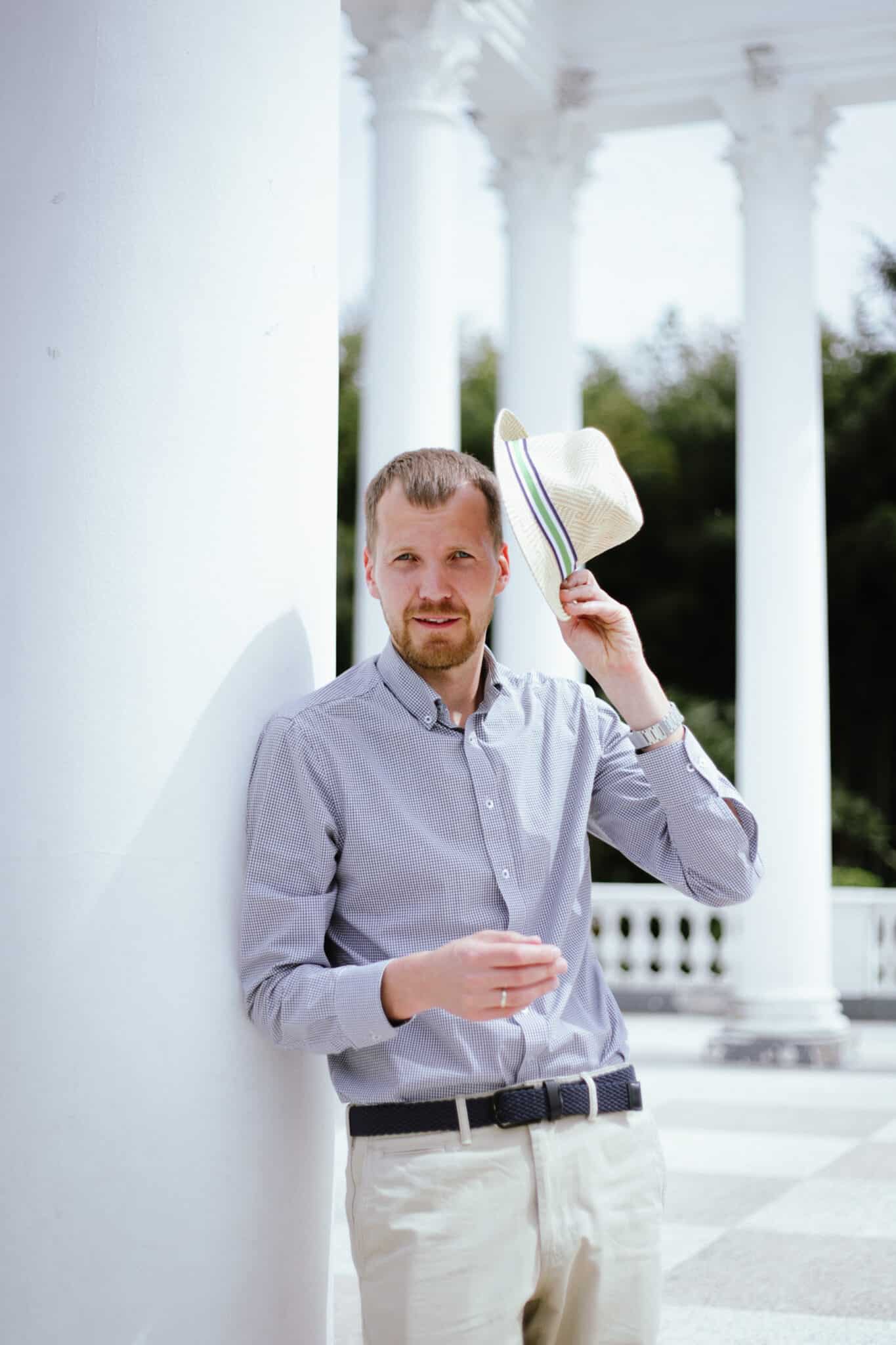
My name is Vitaly Kibitlevsky, I am a tour guide and creator of unique quests in Batumi. If you want to walk around the city with a fascinating storyteller or plunge into an exciting adventure, write to the mail: vitkibit@gmail.com
Find out more about me and my projects here


